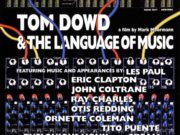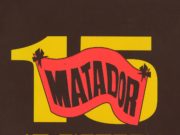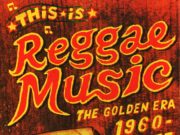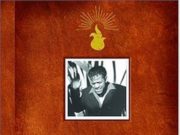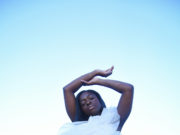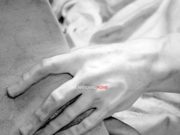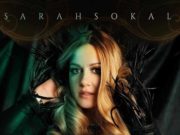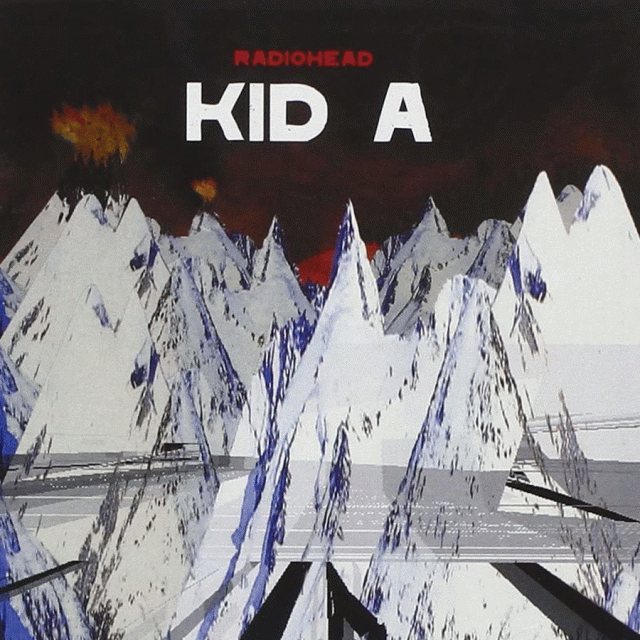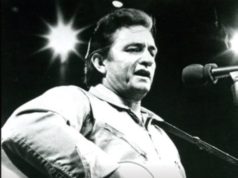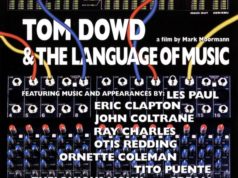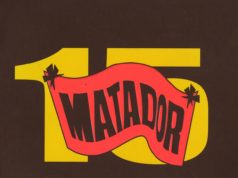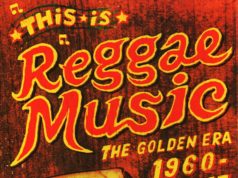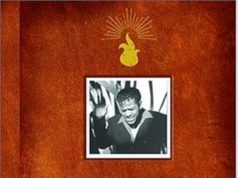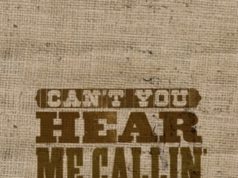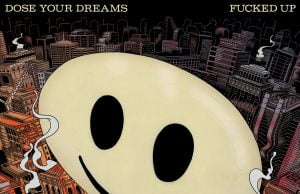Two decades ago, new albums from Radiohead, The Hives, Emmylou Harris and others were spinning away in my portable CD player. Here’s what I had to say about them back then (with some minor editing):
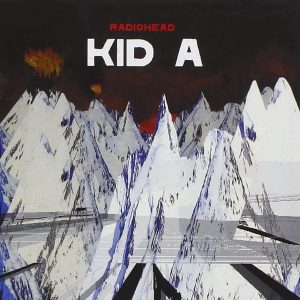 Radiohead
Radiohead
Kid A
Kid A already has quite a reputation to live up to. This fourth album from British art-rock gods Radiohead is easily the most insanely overhyped disc of the year. Months before anyone heard it, fans on the Internet began buzzing that Kid A was “amazing,” “one of the best albums of the year,” and, even more optimistically, “one of the best albums ever.” Well, time will tell if Kid A joins Sgt. Pepper or Dark Side of the Moon as a pop-music landmark. But it is sure to top plenty of critics’ year-end lists. Because, yes, it is pretty damn amazing. Not to mention ambitious, sweeping, grand, challenging, innovative, cinematic, daunting, freaky, cerebral and a whole load of equally nifty adjectives that barely begin to describe it.
Here’s another: Original. Strikingly, compellingly original. Both as a Radiohead album and as a major-label release, Kid A is a drastic departure — an eerie, futuristic soundscape-concept album-song cycle hybrid that all but abandons traditional rock-music songcraft, arrangement and instrumentation for electronic experimentation and avant-garde ambient cybernetics. Kid A is so alien, so otherworldly, so inhuman it could be the first album recorded by computer program, if not a paranoid android.
Or perhaps a clone. In one of the few tidbits singer Thom Yorke has volunteered on the album’s theme, he has said Kid A refers to the first human clone. Fittingly, the disc’s narrative seems to come straight out of one of Philip K. Dick’s twisted sci-fi novels — something about genetically engineered humans trapped in a bleak, dystopian future world that’s facing global apocalypse from an encroaching Ice Age. At least, that’s what I hear in Yorke’s impenetrable lyrics, which resemble a mix of Japanese haiku and Burroughsian cutup: “Everyone / Everyone around here / Everyone is so near / And so alone / So alone.” And that’s one of the more easily understood passages. I’m still trying to decipher couplets like, “There are two colours in my head / What was that you tried to say?” and “We’ve got heads on sticks / You’ve got ventriloquists.” For their part, Radiohead aren’t any help; the album comes without a lyric sheet.
Kid A’s 10-song musical soundtrack can be equally confounding. In no way does it resemble the work of the band responsible for Creep, Anyone Can Play Guitar and Fake Plastic Trees. In fact, considering this quintet has two guitarists, there’s an astonishing lack of guitar on Kid A — the first noticable strumming doesn’t occur until the fourth track, a dreamy, Floydian slice of denial and paranoia called How to Disappear Completely. Most of the rest of Kid A is built upon a shifting foundation of squiggly synths and ambient, pillowy oscillations, many of which could be mistaken for the work of electronic avant-gardists such as Aphex Twin or µ-ziq. Only three tracks remotely resemble traditional songs: National Anthem, which jerks along to a lumpy, Morphine-like bassline and honking sax riff; Idioteque, a sharp shard of freeze-dried techno; and Optimistic, a U2-ish piece of moody midtempo majesty that boasts the album’s most memorable chorus: “You can try the best you can / The best you can is good enough.”
But despite its icy veneer and inscrutability, Kid A isn’t off-putting. Quite the opposite, in fact. Like a finely crafted novel, it draws you into its complex web. With every listen, something new rises up out of the murk — another layer of sound, another snippet of Yorke’s bleating vocals, another piece of the puzzle. And every new clue sends you back to the beginning in hopes that this time, Kid A will give finally give up its secrets. So far — for me at least — it hasn’t. I doubt it ever will. That alone makes it one of the best albums of the year.
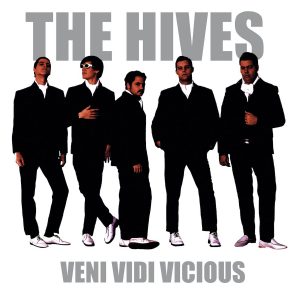 The Hives
The Hives
Veni Vidi Vicious
Five reasons why you should speed to the CD store and demand the new Hives CD, Veni Vidi Vicious in a loud and insistent manner: 1) They’re from Sweden, the home of The Hellacopters, Deadbeats, Backyard Babies and just about every other cool punk band this year; 2) On the CD cover, they’re wearing matching ’70s playboy outfits a la Urge Overkill, complete with ascots and white shoes; 3) They have names like Chris Dangerous, Nicholaus Arson and Howlin’ Pelle Almqvist, and songs called Die, All Right!, The Hives Declare Guerre Nucleaire and The Hives Introduce the Metric System in Time; 4) Their greasy fusion of low-rent blues-punk frenzy and go-go grind sounds like Stiv Bators from The Dead Boys doing a Mick Jagger impersonatoin while the Jon Spencer Blues Explosion plays Rocket From the Crypt tunes in the background; 5) Every Hives CD sold is potentially one less Christina Aguilera CD in the world.
 Robbie Williams
Robbie Williams
Sing When You’re Winning
Snooty Brits love to say that we boorish North Americans “don’t get” Robbie Williams. Oh, we get him. We just don’t find his irony-laden, jack-the-lad pop-star sendup nearly as brilliant as they do. Or like they used to — this latest disc has been getting mixed reviews back in his home country. It’s not hard to see why. Musically, Sing When You’re Winning doesn’t depart much from the formula of The Ego Has Landed, which blended equal parts Britpop bombast, white-boy hip-hop and light-entertainment syrup with production as slick as any boy-pop disc. Lyrically, however, it’s a downer, with Williams attempting to expand his mischievous boyo persona with serious, sincere sentiments about love, life and loss in tunes like Better Man and If It’s Hurting You. That is, when he isn’t dropping trou on the CD booklet. Apparently, the notion that he might have to choose between being a cartoon character and a serious artist is something Williams doesn’t get.
 Emmylou Harris
Emmylou Harris
Red Dirt Girl
For somebody who doesn’t write many songs, Emmylou Harris sure does one helluva job of it on Red Dirt Girl. This long-awaited studio followup to 1995’s Wrecking Ball — and her first album of totally original material in 15 years — finds the melancholy angel spinning 12 introspective, haunting tales of obsession, heartbreak and tragedy with the help of a guest roster that includes Bruce Springsteen, Dave Matthews, Kate McGarrigle, Buddy and Julie Miller and Luscious Jackson’s Jill Cunniff. Of course, the real stars of Red Dirt Girl are Emmylou’s crystalline tone and elegant phrasing, which invest moody tunes like Michaelangelo, Hour of Gold and Bang the Drum Slowly (a heart-squeezing elegy to her late father) with an air of effortless grace and dignity. Here’s hoping she writes more often.
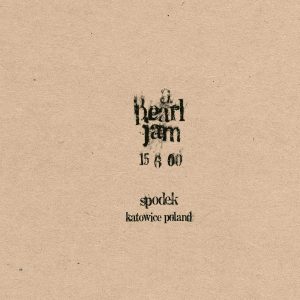 Pearl Jam
Pearl Jam
15/6/00: Spodek, Katowice, Poland
16/6/00: Spodek, Katowice, Poland
The ultimate gift to fans? The ultimate act of rock-star egotism? Or the ultimate bootleg-busting tactic? For whatever reason, this week maverick Seattle rockers Pearl Jam dropped what must be the largest multi-disc release in history — 25 separate double-live albums from their recent European tour. For those who don’t want to spend three days listening to Pearl Jam, Sony is releasing just two volumes in Canada (the rest are available at the band’s website). Clad in plain wrappers with scribbled set lists, the two volumes were recorded on consecutive nights in Poland, but feature vastly different shows. The first is the faster, rockier show, with Eddie Vedder and co. dishing up two energetic hours of tracks from Binaural (Breakerfall, God’s Dice) next to crowd-pleasers like Last Kiss, Even Flow and Rockin’ in the Free World. By contrast, the second night is a longer, leisurely show filled with slower tracks (Release, Sleight of Hand) and odd surprises (covers of Soldier of Love and Leaving Here). For me, the biggest surprise was how much I enjoyed both sets, which serve to showcase the band’s full range of material and moods. I might not want to hear all 25 volumes, but a few more wouldn’t hurt a bit.
 Victoria Williams
Victoria Williams
Water to Drink
A confession: I once left a Victoria Williams show because her rambling style — stopping songs in mid-stream, telling endless stories about her dog, constantly retuning her guitar — was too annoying. While that unpretentious openness is likely the very thing that endears her to countless fans, I’ve always preferred her studio work, where she’s more focused, inspired and riveting. And never more so than on Water to Drink, a sweet little gem that’s easily her finest work. Journeying through styles from chamber-folk and country-pop to Latin lounge, Williams (aided by hubby and ex-Jayhawk Mark Olson and a crack ensemble) has fashioned rich, lush tracks that provide a perfect pillowy cushion for her idiosyncratic, little-girl voice. It’s hard to decide what’s stronger — the earthy, mystical joy of originals like Memphis soul groove Gladys and Lucy and the shoo-be-doo-be gypsy jazzer Claude, or her dreamy, loving covers like the title track (an Anton Carlos Jobim bossa nova) or Until the Real Thing Comes Along, on which she channels Billie Holiday via Rickie Lee Jones. Drink deep — Water is so sweet, I just might give live Vic another try.
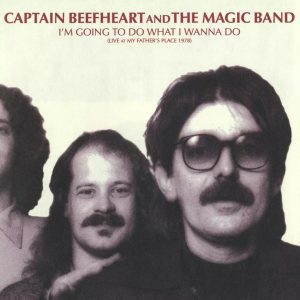 Captain Beefheart & the Magic Band
Captain Beefheart & the Magic Band
I’m Going to Do What I Wanna Do
A carrot, the Captain once observed, is as close as a rabbit gets to a diamond. Likewise, new Beefheart releases are precious jewels to his legion of fans. Especially buried treasures like this limited-edition live recording from 1978, recently unearthed by archive imprint Rhino Handmade and available only online. Taped for radio before an adoring New York throng on his Shiny Beast tour, I’m Going to Do … is a superbly recorded, stereo document of the Captain (aka Don Van Vliet) in all his booglarizing blues and skronking free-jazz glory. Although an inconsistent performer, here he is at the height of his powers, howling and growling his dada-poetry lyrics as his aptly named Magic Band choogles and honks through a 19-song set of lurching, lumpy rhythms and dissonant, connect-the-dots guitar lines. The set is naturally skewed toward Shiny Beast fare like Tropical Hot Dog Night and Harry Irene, but there are more than enough classics (Abba Zaba, Dropout Boogie, Well, Safe As Milk) to make I’m Going to Do … a certified nugget of 24-karat Beefheart gold.
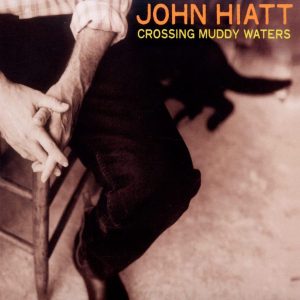
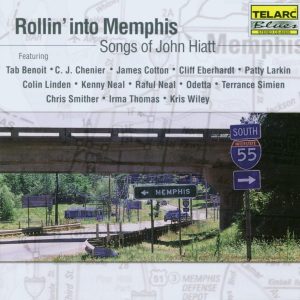 John Hiatt
John Hiatt
Crossing Muddy Waters
Rolling Into Memphis: Songs of John Hiatt
Various Artists
Thanks to high-profile covers of his tunes and his host gig on Sessions At West 57th, John Hiatt’s stock as a performer and celebrity has never been higher. Oddly enough, at the same time he’s been stuck in a long musical slump, tossing off forgettable CDs like Walk On and Little Head. On his new acoustic set Crossing Muddy Waters, Hiatt finally digs himself out of his musical rut by getting back to basics. Unplugging the guitars, sending the drummer home and trading slick studio gloss for a rough and rustic approach, Hiatt offers up 11 bluegrass-tinged country-rock strummers that are his purest, most appealing tunes in years. From the roots-pop stomp of Lincoln Town and the two-step comic lament Gone to the Delta to the field-holler gospel of Lift Up Every Stone, Muddy Waters is a fine return to form by an artist who’s long overdue. For those who need even more Hiatt, try Rolling Into Memphis, a passable if generic set of Hiatt covers from the likes of C. J. Chenier (who gives Falling Up the zydeco touch), Odetta (who graces Listening to Old Voices with her timeless pipes) and Tab Benoit (who injects Feels Like Rain with a New Orleans bump). Admittedly, a Hiatt tribute is easier said than done — his A material has already been taken by stars like Bonnie Raitt and Eric Clapton. Still, emphasizing second-tier songs and ignoring classics like Memphis in the Meantime, Slow Turning and Drive South seems an odd way to honour Hiatt the tunesmith.
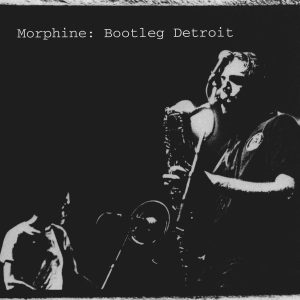 Morphine
Morphine
Bootleg Detroit
Usually, posthumous albums — especially live ones — are a cheap record-company bid to shake a few more dollars out of a dead artist’s pockets. Not this time. Bootleg Detroit, a tape of a Morphine gig from 1994, was approved for release by leader Mark Sandman, who mixed the disc and did the cover art before leaving for his final fateful tour of Italy, where he died onstage of a heart attack last year. As his final offering, a cheaply recorded fan bootleg of a five-year-old show might seem an inadequate legacy. But in Sandman and Morphine’s case, it’s a perfect fit. Caught on a great night, the eclectic noir-rock trio rock like there’s no tomorrow on this 12-song set, weaving two-string slide bassist Sandman’s rubbery, wobbly licks and drummer Billy Conway’s thumping, jazzy grooves with saxman Dana Colley’s noirish honk, crafting an intoxicating tapestry of low-rock majesty on favourites like Cure For Pain, Come Along and Head With Wings. Sure the audience-tape sound is a little cheap. Thankfully, that’s the only thing cheap about Bootleg Detroit.
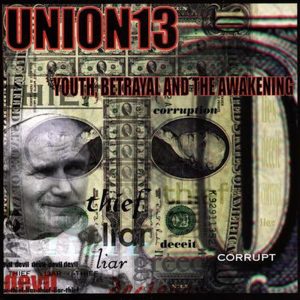 Union 13
Union 13
Youth, Betrayal & the Awakening
Just another band from East L.A.? Not by a long shot. Union 13 may be from the land of low riders and Los Lobos, but this Hispanic punk quartet are more likely to drop la bomba than La Bamba. The bilingual outfit are hardcore enough to share the stage with the likes of Bouncing Souls and U.S. Bombs, yet maintain a Latino-centric outlook that dovetails with bands like Molotov and Café Tacuba. On this third album, that translates to 17 rabble-rousing punk anthems delivered with ample amounts of Marshall-stack power, left-wing venom, pogo-beat passion — not to mention the occasional rolled R amid the rapid-fire Spanish. In any language, it kicks ass.
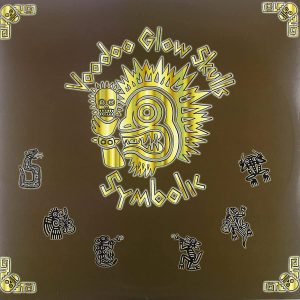 Voodoo Glow Skulls
Voodoo Glow Skulls
Symbolic
At a time when bands are deserting the sinking ska-punk ship like rats, Voodoo Glow Skulls haven’t changed a bit — their fifth studio album has all the herky-jerky grooves, hypercharged horns, belted-out vocals and lyrical irreverence of previous discs such as Firme and Band Geek Mafia. Yet it doesn’t sound the least bit stale. Why? Well, maybe it’s because this Riverside, Calif., outfit — led by the three Casillas brothers — never really fit in with the ska-punk pack anyway. Unlike the many soundalike acts who went from cool to cliche in half a year, the Skulls boast both an unflagging energy and a unique blend of ska, punk and Latino rock that was always a cut above the rest. Besides, back in 1993, they were some of the guys who started this party — so it only makes sense that they’d be the last men standing.
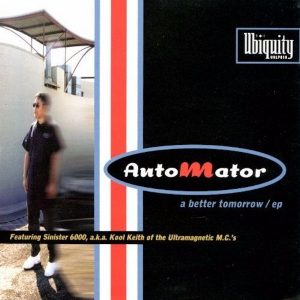 Dan the Automator
Dan the Automator
A Much Better Tomorrow
San Francisco’s Dan Nakamura may not be the flashiest DJ on the planet, but he sure is one of the freakiest. And one of the most innovative. First, he partnered with Kool Keith to record the infamous, X-rated Dr. Octagon CD in 1996; then, last year, he teamed with Prince Paul in the kooky Handsome Boy Modelling School, a hip-hop outfit inspired by an episode of Chris Elliott’s Get A Life. Neither of those were his first efforts, though. That honour belongs to his ’96 EP A Better Tomorrow, which he has now amended with extra tracks and reissued. Without doubt, the tracks featuring Keith’s twisted sci-fi rhymes and bass-ackwards motor-mouth delivery are the main draw — especially Cartoon Capers, a track that gives Looney Tune a whole ’nother meaning. But don’t sleep on Nakamura’s instrumental work, which combines big, loping beats and serious string work — he’s a classically trained violinist — into one giant ball of creepy tension. Hip-hop just doesn’t get any better.
 Encore
Encore
Self-Preservation
If slow and steady really does win the race, I’m putting my money on Encore. This San Francisco Bay-area rhymer passes on the bellowing pugilism and rap-rock regurgitation so prevalent in the game these days, preferring a conversational midtempo vocal flow and tracks based on syncopated hip-hop minimalism. But don’t mistake his deliberate downtempo vibe for lethargy; with his vivid confessional tales and nimble tongue, Encore is as destructive and unstoppable as lava. Call it survival of the phattest. Hope we hear more more from Encore.
 DJ Dave Audé
DJ Dave Audé
Rush Hour
Nobody hops a trend like Madonna. So the fact that La Ciccone enlisted Los Angeles deejay Dave Audé to remix her new single Music tells you where he sits on the hot/not scale. Here, the veteran plate-spinner makes the people come together with a pumping, 73-minute Electric Circus-ready set of primo tracks from dance-floor mainstays such as Tall Paul, DJ Remy, Hani and others — including Audé’s own space-invader robo-funk gem Push That Thing. Hey, Mr. DJ, put a record on …



